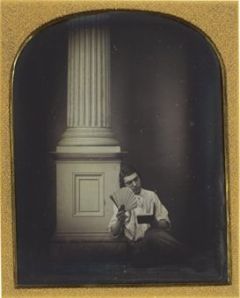In 2011, the global art auction market generated 21% more than in 2010 and every single segment of the art market had progressed in terms of turnover
While old economies are struggling, growth is accelerating in the BRICS countries. The five BRICS - Brazil, Russia, India, China and South Africa- have been enjoying much stronger economic expansion than the developed countries and China's growth in particular has profoundly modified the geographical structure of the global art market according to thierry Ehrmann, the founder and CEO of Artprice, the world leader in art market information. Moreover, in Singapore, Beijing and Hong Kong, politicians are aware of the enormous economic potential of art for their state or their city, and their governments strongly support major cultural events including Contemporary Art fairs. In addition to the 49% growth in auction revenue from artworks in China, a number of other Asian countries have also posted particularly dynamic growth.
While Christie's continued to lead the auction market for Indian art with sales in excess of $20 million (Rs 100 crore) in 2011, Sotheby’s was second with its Indian art sales at $9.5 million (Rs 50 crore). At an online auction conducted by a Mumbai-based firm last year, paintings by Indian artists, including big names like Syed Haider Raza, Tyeb Mehta, Jehangir Sabavala, fetched more than US$14 million (Rs 70 crore).
“The Indian contemporary and modern art market has grown. The fact that we have added more sale locations for this category shows the increasing global demand for modern and contemporary Indian art,” said Sonal Singh, associate director, south Asian modern + contemporary art, Christie’s. The auction house has three international sites — New York, London and Hong Kong — where Indian art is auctioned.
“Top quality art with stellar provenance and in good condition finds buyers in India and world-over. In the past 18 months, we have seen record prices for artists such as Raza and Akbar Padamsee,” said Maithili Parekh, director, Sotheby’s.
Raza’s painting ‘Saurashtra’, which was auctioned for US$34,86,965 (around Rs 17 crore) in June 2010, is the most expensive Indian artwork ever sold.
In 2011, the global art auction market generated 21% more than in 2010 and there is not a single segment of the art market that did not progress in terms of turnover. Compared with 2010, Modern art added $1.2B, Post-war art added $372m, Contemporary art added $291m, Old Masters added $124 million and 19th century art posted an increase of $43 million. In addition, bulimic buying has not left any medium on the side-lines. 2011 saw the sale of more paintings, sculptures, photographs, drawings and even prints than 2010. Indeed, driven by the rocketing prices of the Chinese Old and Modern masters, drawing has really come into its own, with its annual revenue up by $1.318 billion over the year.
The Ashok Art Gallery is internationally known for one of its most important holdings: more than 2000 major works by the world's most significant Artists.Over the past years, as Ashok Art Gallery has become a major centre for contemporary visual art, the Gallery has built a strong collection of contemporary work of different artists, we became a sponsor of the STANDUP-SPEAKOUT Artshow, Organized by Art Of Living Foundation and United Nations.Organized an International Contenmporary Art Exhibition including artists from USA, The Nederlands, Pakistan and India.We have also participated at Art Expo India 2008, 09 Mumbai and India Art Summit 2008 New Delhi.


 **Nicholas Forrest is an art market analyst, art critic and journalist based in Sydney, Australia. He is the founder of
**Nicholas Forrest is an art market analyst, art critic and journalist based in Sydney, Australia. He is the founder of 




























